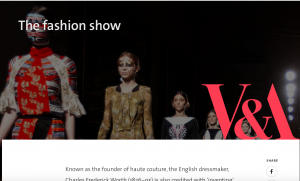The outcome of the tasks given each week was to produce a digital journey on the WSA blog post. I found the lectures to be really helpful and completing the tasks has helped me to gained new research and critical thinking skills. When I started Research and Communication I wasn’t sure how I felt because I knew that this module consisted of writing essay based tasks and written work is not my strong point.
Writing the first task about how to use online resources encouraged me a lot to go to the library because the aim of the task was to research primary and secondary materials. Searching on the internet for other sources was also easy and time efficient but I had to keep in mind that some sources found may not be as reliable as I thought. I found that going into the library physically motivated me to get the work done quicker as I get pretty distracted If I was to use the internet.
The next aim for the next task was how to reference sources properly using the Harvard Referencing System. I found this pretty straight forward, I’ve never used this way of referencing other than copying and pasting the link. As a result, I can confidently use this way to reference sources for my other projects.
I found that my strongest area in the module was writing the Visual Research and the Ethical Issue tasks. For the Visual Research task, I felt confident talking about the designer I chose due to admiration, and for the Ethical task it showed I had strong points and analysis on how men objectify women, I was quite shocked by the image that we used for the advertisement. We were encouraged to use a different range of sources to gather references and quotes, as a result it led me to use the resources in the library which was eminently useful, it directed me to find more information about my chosen designer and well suited academic quotes.
Working on the Reflective Writing task was quite a challenge for me. Reading the chapter was a long process because I had to go back and re-read some paragraphs again in order to gain full understanding. As a result, I printed out the whole chapter to highlight and annotate the sentences I understood and wrote down a few points to make it clearer for myself. As well as reading the academic chapter I had to find a book which relates back to the task, this task wasn’t hard as I thought because I had an idea of what topic I needed to extract and in searching of a few books, I finally found one that was best suited.
Overall this semester has helped me understand the process of contextual writing, by breaking down to weekly tasks it gave me enough time to understand and respond to the theme. Also by being the on top of the work it became less stressful. This module has widened my knowledge on finding sources with different platforms, this will be beneficial to me in the future as I can relate it to my other ongoing projects.

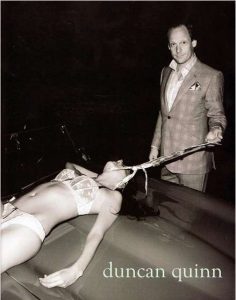
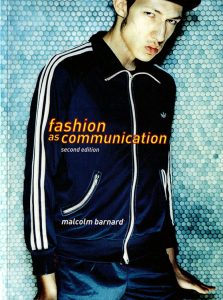

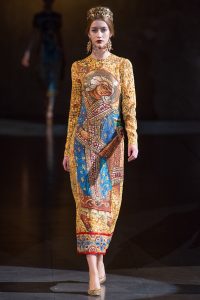

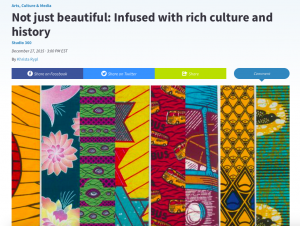
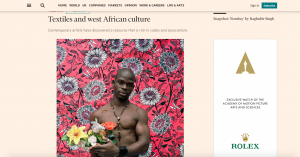
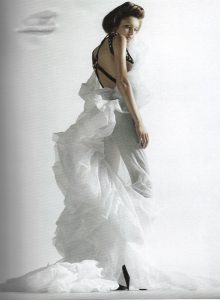 The image I have chosen was from a book ‘House of Viktor & Rolf’ By Caroline Evans and Susannah Frankel. This book shows the collections throughout the years in which designers Viktor Horsting and Rolf Snoering have created. Reading the book about the “Upside Down” collection fascinated me as to how they showcased the couture pieces. They had garments presented that was worn by two models showing one upright and one upside-down, on the catwalk they first showed the correct way and then the other. The whole collection was presented in reverse. Starting the show with the final parade of the models. It was also characterized by satin flowing shapes contrasting to masculine tuxedos. The most important part that really stood out to me was when they presented the show in reverse, Viktor and Rolf breaking boundaries and really standing out as unique designers. [1]
The image I have chosen was from a book ‘House of Viktor & Rolf’ By Caroline Evans and Susannah Frankel. This book shows the collections throughout the years in which designers Viktor Horsting and Rolf Snoering have created. Reading the book about the “Upside Down” collection fascinated me as to how they showcased the couture pieces. They had garments presented that was worn by two models showing one upright and one upside-down, on the catwalk they first showed the correct way and then the other. The whole collection was presented in reverse. Starting the show with the final parade of the models. It was also characterized by satin flowing shapes contrasting to masculine tuxedos. The most important part that really stood out to me was when they presented the show in reverse, Viktor and Rolf breaking boundaries and really standing out as unique designers. [1]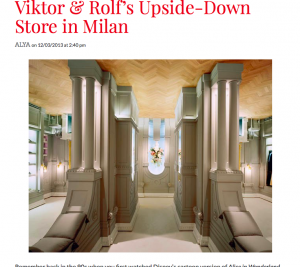 ating back to the ‘Upside Down’ Collection. Viktor and Rolf as designers they always like to take their collection to another level which I’ve always admired them for that. Siebe Tettero was an interior designer who worked on the upside-down store basing it on a traditional Parisian couture salon and had a 19th century French boudoir interior. The colour palette for the design successfully worked to balance out the strong upside-down architecture, balancing the calm colours with the bold shapes. I wanted to research into other artists and designers that have done the similar concept of turning objects upside-down. Although when I researched it not much came up with the result. However, I found a photographer named Martin Tremblay who also worked in the upside-down concept capturing models in a non traditional way of posing, the idea brings the fashion to the foreground which is forcing the viewer to focus on an unusual juxtaposition. [2]
ating back to the ‘Upside Down’ Collection. Viktor and Rolf as designers they always like to take their collection to another level which I’ve always admired them for that. Siebe Tettero was an interior designer who worked on the upside-down store basing it on a traditional Parisian couture salon and had a 19th century French boudoir interior. The colour palette for the design successfully worked to balance out the strong upside-down architecture, balancing the calm colours with the bold shapes. I wanted to research into other artists and designers that have done the similar concept of turning objects upside-down. Although when I researched it not much came up with the result. However, I found a photographer named Martin Tremblay who also worked in the upside-down concept capturing models in a non traditional way of posing, the idea brings the fashion to the foreground which is forcing the viewer to focus on an unusual juxtaposition. [2]